Overnight aurora sets sky on fire, more possible tonight
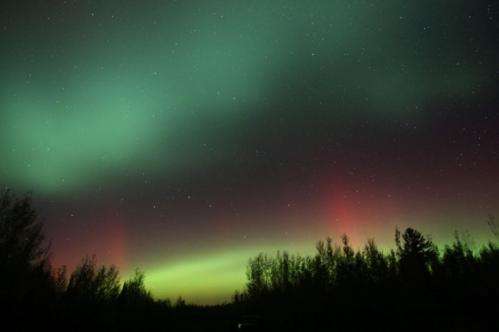
I'm writing this at 1:30 a.m. running on what's powering the sky over northern Minnesota right now – auroral energy. Even at this hour, rays are still sprouting in the southern sky and the entire north is milky blue-white with aurora borealis. Frankly, it's almost impossible to resist going out again for another look.
The arrival of a powerful solar wind in excess of 375 miles per second (600 km/second) from a coronal mass ejection shocked the Earth's magnetic sheath last night beginning around 9 p.m. CDT. The sun's magnetic field, embedded in the wind, pointed sharply southward, allowing eager electrons and protons to worm their way past our magnetic defenses and excite the atoms in the upper atmosphere to glow. Voila! Northern lights.
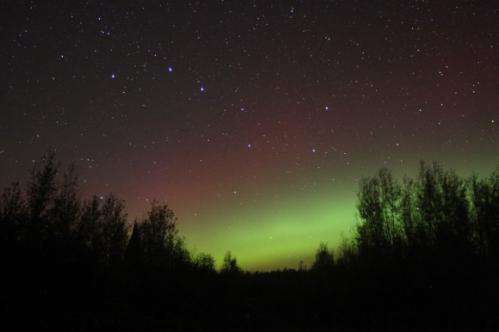
Sure, it started innocently enough. A little glow low in the northern sky. But within half an hour the aurora had intensified into a dense bar of light so and green and bright it cast shadows. This bar or swath grew and grew like some atomic amoeba until it swelled beyond the zenith into the southern sky. Meanwhile, an isolated patch of aurora glowed like an green ember beneath the Pleiades in the northeastern sky. The camera captured its eerie appearance as well as spectacular curtains of red aurora dancing above the dipper-shaped cluster.
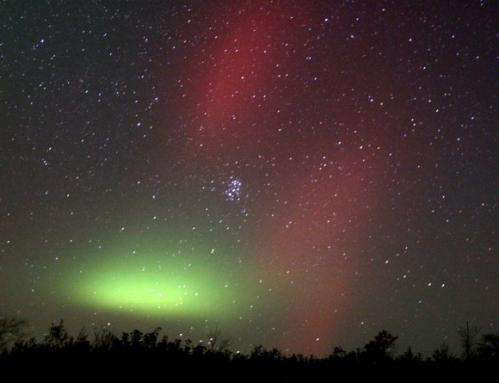
Soft patches, oval glows and multiple arcs lit up the north, east and west, but in the first two hours of the display I never saw a ray or feature with any definition. The camera recorded a few but all was diffuse and pillowy to the eye. Rays finally made their appearance later – after midnight and later – when they massed and surged to the zenith and beyond.
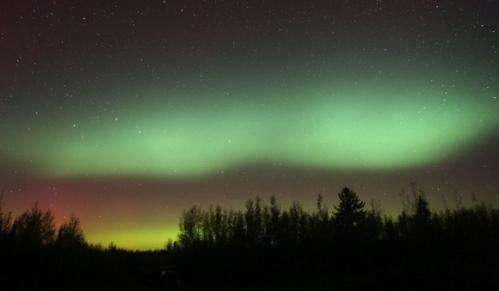
Then came the flickering, flame-like patches and snaky shapes writhing lifelike across the constellation Pegasus during the phase called the coronal aurora. That's when all the curtains and rays gather around the local magnetic zenith. As they flicker and flame, their shapes transform into eagle wings and snakes wriggling across the stars.
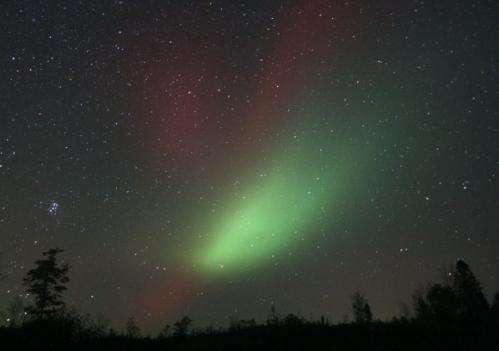
Funny, the space weather forecast called for quiet conditions last night and for the next two nights. But the eruption of a large filament, a tubelike region of dense hydrogen gas held aloft in the sun's atmosphere by magnetic fields, sent a bundle of subatomic joy in Earth's direction a bit earlier than expected. More auroras are possible tonight and tomorrow night as the effect of the shock wave continues. There are so many ways to appreciate the aurora but my favorite is simply to stand there dumbfounded and try to take it all in. Few phenomena in nature are more deeply moving.
It's now 3 a.m. and the aurora won't quit.
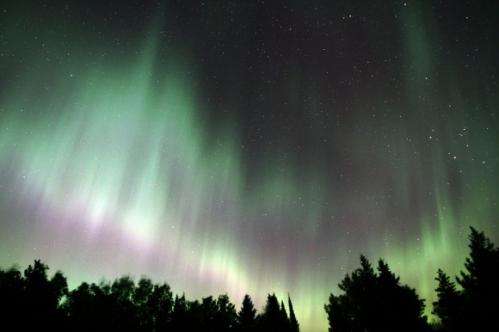
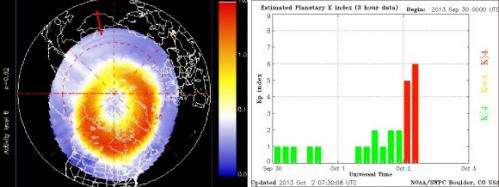
Source: Inside Science News Service





















